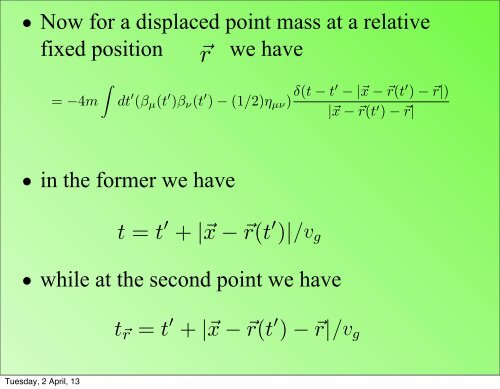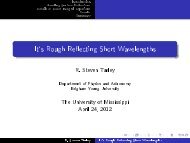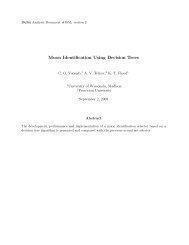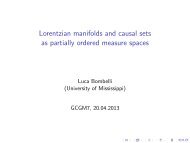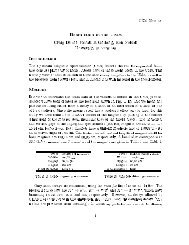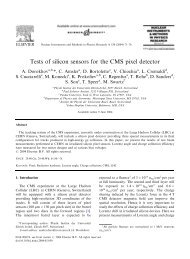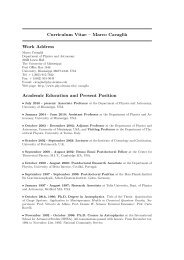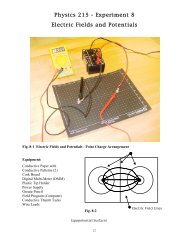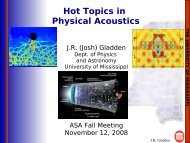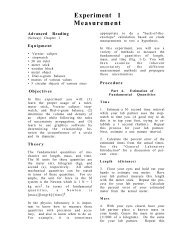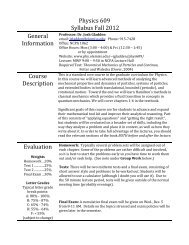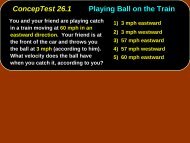The Path Integral, Perturbation Theory and Complex Actions
The Path Integral, Perturbation Theory and Complex Actions
The Path Integral, Perturbation Theory and Complex Actions
You also want an ePaper? Increase the reach of your titles
YUMPU automatically turns print PDFs into web optimized ePapers that Google loves.
• Now for a displaced point mass at a relative<br />
fixed position we have<br />
oves only along ∫ the line that sepanstant<br />
= −4m unit vector, <strong>and</strong> shifting the<br />
⃗r<br />
dt ′ (β µ (t ′ )β ν (t ′ ) − (1/2)η µν ) δ(t − t′ −|⃗x − ⃗r(t ′ ) − ⃗r|)<br />
|⃗x − ⃗r(t ′ ) − ⃗r|<br />
ce<br />
M<br />
•<br />
moves<br />
ˆr<br />
in the only former along we have the line that (5) sepaa<br />
constant t) 2 unit vector, <strong>and</strong> shifting the<br />
elds<br />
have r(t t t) = ⇥t ′ r(t) + |⃗x −ṙ(t)r(t)/v ⃗r(t ′ )| g<br />
GM ˆr<br />
• GM<br />
⇥ while ˆr at the second point we have<br />
r 2 (t) (1 + 2ṙ(t)/v (5)<br />
r(t t) 2 g). (6)<br />
cillators ll, we have with r(t t ⃗r r(t) = t =r(1 t) ′ + ⇥|⃗x r(t) + −⇤ ⃗r(t sin(⌃t ṙ(t)r(t)/v ′ ) − ⃗r| g<br />
t the origin, <strong>and</strong> that the motion is<br />
GM ˆr<br />
Tuesday, 2 April, 13


